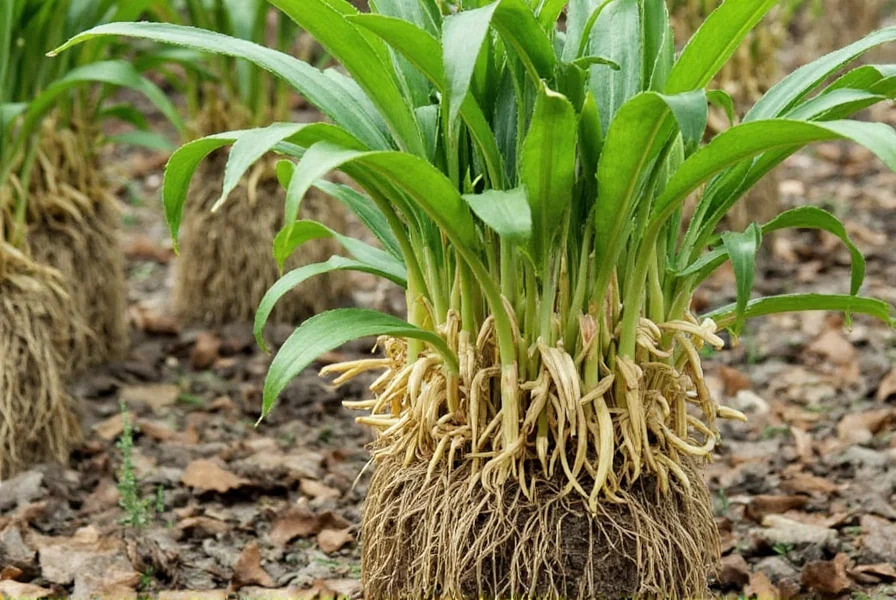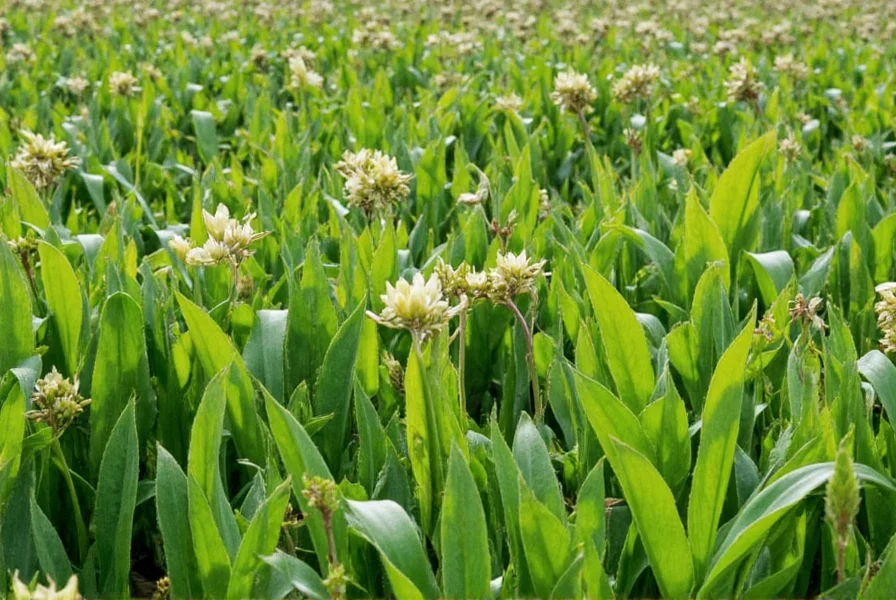Ginger lily farms represent a specialized niche within horticulture that often causes confusion due to the misleading common name. Unlike the ginger root found in grocery stores, ginger lilies belong to the Hedychium genus in the Zingiberaceae family, sharing botanical relations but serving entirely different purposes. These farms cultivate plants primarily for ornamental use, fragrance production, and specialty gardening markets rather than culinary applications.
Understanding Ginger Lilies: Beyond the Name Confusion
The term "ginger lily" creates a common misconception that these plants produce edible ginger. In reality, Hedychium species contain no culinary value and shouldn't be consumed. Ginger lily farms exist to propagate and distribute these visually striking plants known for their:
- Exotic, fragrant flowers that bloom in summer and fall
- Tropical appearance with lush green foliage
- Adaptability to various growing zones with proper care
- Use in perfumery and essential oil production
Professional ginger lily farm operations maintain extensive collections of different Hedychium varieties, carefully managing propagation, growth conditions, and distribution to nurseries and discerning gardeners.

Major Ginger Lily Varieties Cultivated on Specialized Farms
Ginger lily farms typically focus on several key varieties, each with unique characteristics that appeal to different markets:
| Variety | Flower Color | Height | Notable Characteristics |
|---|---|---|---|
| Hedychium coronarium | Pure white | 4-8 feet | "White ginger lily," intensely fragrant, Hawaii's state flower |
| Hedychium gardnerianum | Yellow with orange throat | 6-10 feet | "Kahili ginger," strong fragrance, invasive in some regions |
| Hedychium coccineum | Red to orange | 3-6 feet | "Scarlet ginger lily," less fragrant but vibrant color |
| Hedychium flavescens | Pale yellow | 6-10 feet | "Pink ginger," sweet fragrance, invasive potential |
Operations at Professional Ginger Lily Farms
Ginger lily farm cultivation techniques differ significantly from agricultural ginger production. These specialized operations typically include:
Rhizome Propagation Systems
Unlike seed-based propagation, most ginger lily farms use rhizome division as their primary method. This asexual reproduction ensures genetic consistency of desirable traits like flower color and fragrance intensity. Professional operations maintain mother stock plants in controlled environments to produce high-quality planting material.
Climate-Controlled Growing Environments
While ginger lilies thrive in tropical conditions, many ginger lily farms implement sophisticated systems to extend their growing range:
- Greenhouse operations for year-round production in temperate climates
- Seasonal field cultivation in warmer regions with proper winter protection
- Specialized irrigation systems maintaining consistent moisture without waterlogging
- Soil amendment protocols creating the ideal slightly acidic, well-draining medium
Growing Ginger Lilies Successfully: Key Considerations
For gardeners interested in where to buy ginger lily plants, understanding proper cultivation is essential. Successful growth requires attention to several critical factors:
Climate Requirements
Ginger lilies prefer warm temperatures (70-90°F) and high humidity. In temperate zones, they function as seasonal plants or require overwintering indoors. Hardy varieties can survive USDA zones 8-10 with proper mulching, while more tender types need complete rhizome storage during cold months.
Optimal Planting Conditions
When sourcing authentic ginger lily rhizomes from reputable farms, plant them with these guidelines:
- Plant rhizomes horizontally 2-4 inches deep in spring after last frost
- Space plants 18-24 inches apart for proper air circulation
- Provide partial shade in hot climates, more sun in cooler regions
- Maintain consistently moist (not soggy) soil throughout growing season

Practical Uses of Ginger Lilies Beyond Ornamental Value
While primarily grown for their visual appeal, ginger lilies offer several additional benefits that drive demand at specialized farms:
Fragrance Applications
The intense floral scent of varieties like Hedychium coronarium makes them valuable in perfumery. Some ginger lily farms partner with fragrance companies to supply flowers for essential oil extraction, creating a niche market beyond horticultural sales.
Cultural and Ceremonial Significance
In Hawaii, where Hedychium coronarium is the state flower (pīka kea), ginger lilies feature prominently in leis and cultural ceremonies. Farms specializing in Hawaiian varieties often supply the local floral industry with fresh blooms for traditional uses.
Responsible Sourcing of Ginger Lilies
When searching for where to buy ginger lily plants, consider these factors to ensure you're supporting ethical operations and protecting local ecosystems:
- Verify if the variety you're purchasing is invasive in your region (some Hedychium species are problematic in certain ecosystems)
- Choose farms that provide proper growing information to prevent accidental invasiveness
- Look for operations that follow sustainable growing practices without excessive chemical inputs
- Consider supporting small-scale specialty farms that maintain diverse collections rather than monoculture operations
Reputable ginger lily farms transparently share information about each variety's growth habits, potential invasiveness, and proper cultivation techniques—essential knowledge for responsible gardening.
Common Misconceptions About Ginger Lily Farms
Several persistent myths surround ginger lily farms that cause confusion among new gardeners:
- Misconception: Ginger lilies produce edible ginger root
Reality: The rhizomes are not culinary ginger and shouldn't be consumed - Misconception: All ginger lilies are invasive
Reality: While some species can be invasive in specific climates, many varieties remain well-behaved in garden settings - Misconception: Ginger lilies require tropical conditions to grow
Reality: With proper care, many varieties thrive in temperate zones as seasonal plants
Understanding these distinctions helps gardeners make informed decisions when exploring ginger lily farm offerings and prevents disappointment from mismatched expectations.
Conclusion: The Unique Niche of Ginger Lily Farming
Ginger lily farms fill an important specialty role in horticulture, providing unique botanical specimens that enhance gardens with tropical flair and captivating fragrance. By understanding the difference between these ornamental plants and culinary ginger, gardeners can better appreciate the specialized knowledge and care that goes into professional ginger lily cultivation. Whether you're seeking to add exotic beauty to your garden or simply want to learn about these fascinating plants, recognizing the specific purpose and operations of ginger lily farms helps ensure successful growing experiences and supports sustainable horticultural practices.
Frequently Asked Questions
Are ginger lilies the same as culinary ginger?
No, ginger lilies (Hedychium species) are completely different from culinary ginger (Zingiber officinale). Despite the similar name and botanical family relation, ginger lilies are grown exclusively for ornamental purposes and their rhizomes are not edible. Culinary ginger belongs to a different genus and produces the familiar spice used in cooking.
Can I grow ginger lilies in a temperate climate?
Yes, many ginger lily varieties can be grown in temperate climates with proper care. Hardy varieties like Hedychium coccineum can survive USDA zones 7-10 with winter mulching, while more tender types require rhizome storage indoors during cold months. Ginger lily farms specializing in temperate-zone cultivation develop specific growing protocols to help gardeners succeed outside tropical regions.
Are ginger lilies invasive?
Some ginger lily species can be invasive in certain ecosystems, particularly Hedychium gardnerianum (Kahili ginger) and Hedychium flavescens in tropical and subtropical regions like Hawaii and New Zealand. However, many varieties remain well-behaved in garden settings. Reputable ginger lily farms provide information about each variety's growth habits to help gardeners make responsible planting decisions.
What's the best time to plant ginger lily rhizomes?
The optimal time to plant ginger lily rhizomes is in spring after the last frost when soil temperatures reach at least 60°F (15°C). This timing allows the plants to establish before summer heat. In warmer climates (zones 8+), fall planting can also work, giving roots time to establish before winter dormancy. Ginger lily farms typically ship rhizomes at the appropriate planting time for each customer's climate zone.
How do I care for ginger lilies during winter?
Winter care for ginger lilies depends on your climate zone. In zones 8-10, apply a thick mulch (6-8 inches) after the first frost to protect rhizomes. In colder zones, dig up rhizomes after foliage dies back, clean and dry them, then store in peat moss or vermiculite in a cool, dark place (45-50°F). Check monthly for rot or drying out. Proper winter care is essential knowledge provided by quality ginger lily farms to ensure customer success.










 浙公网安备
33010002000092号
浙公网安备
33010002000092号 浙B2-20120091-4
浙B2-20120091-4